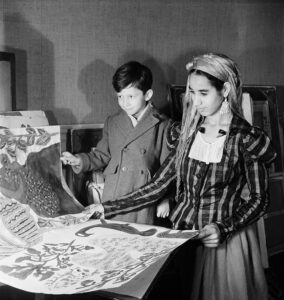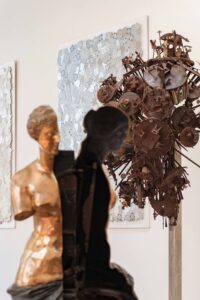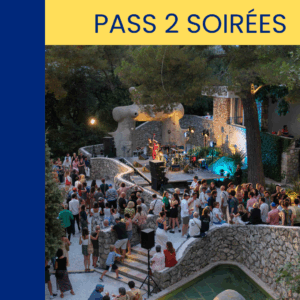
Iru Harri
This granite sculpture from the series Harri (“stone” in Basque), by Chillida, welcomes visitors into the sculpture garden. It is a cube formed of three overlapping, interlocking stones. Chillida always fought against the laws of gravity. When one looks at the elements he uses – very heavy and substantial – this seems ironic. However, he always maintained that he needed weight in order to rebel against it. He was conscious that matter fell naturally downwards, but his feeling was that the spirit rose upwards. He worked on the idea of bringing lightness to bulky masses of stone or steel by giving them a spirituality that would lift them above their being.
Eduardo Chillida (1924-2002)
Eduardo Chillida began studying architecture, but dropped out in 1947 to devote himself to drawing, engraving and sculpture. He worked in series, exploring the possibilities of each material. After iron, which he worked following the example of Julio González, Chillida used wood, plaster, chamotte clay, steel, cement, and sometimes rarer materials like alabaster. He was awarded the Grand Prize for Sculpture at the 1958 Venice Biennale.



